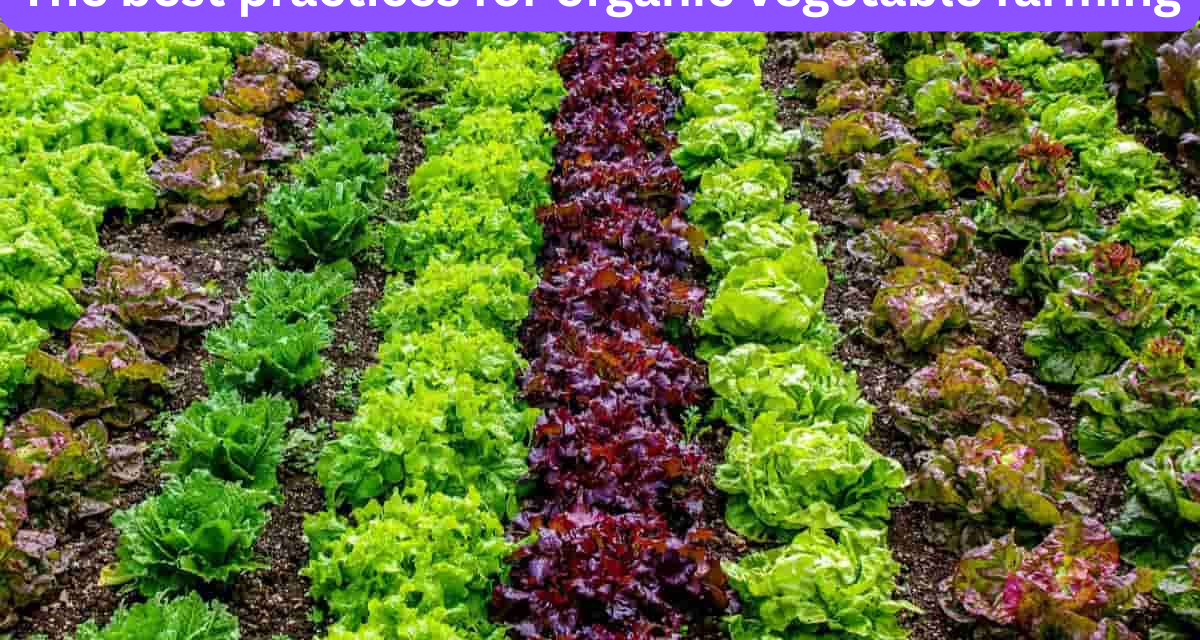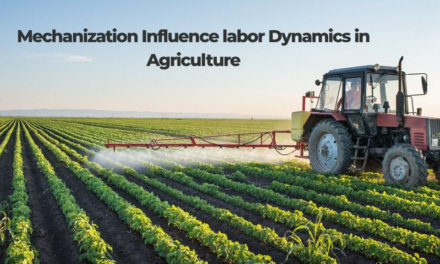Organic vegetable farming emphasizes sustainable practices that enhance soil health, minimize environmental impact, and produce high-quality, chemical-free crops. To achieve success in organic farming, it’s essential to adopt a comprehensive approach that integrates soil management, pest and disease control, and resource efficiency. Here are the best practices for organic vegetable farming:
1. Soil Management
Healthy soil is the foundation of organic farming.
- Build Organic Matter:
- Add compost, green manure, and farmyard manure to improve soil fertility and structure.
- Use cover crops (e.g., clover, vetch) to fix nitrogen and prevent erosion.
- Soil Testing:
- Regularly test soil for pH, nutrient levels, and organic matter content.
- Amend soil with lime (for acidity) or sulfur (for alkalinity) based on test results.
- Crop Rotation:
- Alternate crops to prevent nutrient depletion and reduce pest and disease buildup.
- Follow a rotation plan that includes legumes to enhance nitrogen levels.
2. Pest and Disease Management
Control pests and diseases without synthetic chemicals.
- Integrated Pest Management (IPM):
- Encourage natural predators like ladybugs, spiders, and birds by maintaining biodiversity.
- Use traps, pheromone disruptors, and barriers (e.g., nets) to reduce pest populations.
- Biological Controls:
- Apply bio-pesticides like neem oil, Bacillus thuringiensis (Bt), and Trichoderma to control pests and diseases.
- Crop Selection:
- Plant resistant or tolerant vegetable varieties to minimize pest and disease impact.
- Companion Planting:
- Pair vegetables with companion plants (e.g., marigolds with tomatoes) to deter pests.
3. Weed Management
Suppress weeds naturally to reduce competition with crops.
- Mulching:
- Apply organic mulches like straw, wood chips, or grass clippings to suppress weeds, retain moisture, and add nutrients.
- Mechanical Weeding:
- Use hand tools, hoes, or mechanical weeders to remove weeds.
- Crop Spacing:
- Optimize spacing to allow crop canopies to shade out weeds.
4. Water Management
Efficient water use is critical in organic farming.
- Irrigation:
- Use drip irrigation or soaker hoses to deliver water directly to the root zone, reducing water waste and leaf wetness.
- Rainwater Harvesting:
- Collect and store rainwater for irrigation, especially in areas with irregular rainfall.
- Mulching:
- Conserve soil moisture and reduce evaporation with organic mulch layers.
5. Nutrient Management
Provide essential nutrients without synthetic fertilizers.
- Organic Fertilizers:
- Use compost, vermicompost, bone meal, blood meal, and rock phosphate for balanced nutrition.
- Legumes and Green Manures:
- Grow nitrogen-fixing crops like alfalfa or beans to naturally replenish soil nitrogen.
- Liquid Fertilizers:
- Use organic liquid fertilizers like fish emulsion or seaweed extract for foliar feeding.
- Crop Residues:
- Incorporate crop residues into the soil to recycle nutrients.
6. Seed Selection
Use high-quality, organic seeds for better yields.
- Certified Organic Seeds:
- Source seeds that are certified organic and free from chemical treatments.
- Heirloom Varieties:
- Grow heirloom seeds to preserve biodiversity and produce unique, flavorful crops.
- Seed Saving:
- Save seeds from previous harvests to reduce costs and ensure adaptability to local conditions.
7. Crop Planning
Strategic crop planning maximizes yield and reduces risk.
- Succession Planting:
- Plant crops in intervals to ensure continuous harvests.
- Companion Planting:
- Pair complementary crops to enhance growth and deter pests (e.g., basil with tomatoes).
- Polyculture:
- Grow multiple crops in the same area to mimic natural ecosystems and improve resilience.
8. Disease Prevention
Prevent diseases naturally by creating unfavorable conditions for pathogens.
- Crop Rotation:
- Break disease cycles by alternating crops.
- Healthy Seedlings:
- Use disease-free, strong seedlings to start your crops.
- Sanitation:
- Remove and destroy infected plant material to prevent disease spread.
- Aeration:
- Ensure proper plant spacing to reduce humidity and improve airflow.
9. Post-Harvest Handling
Maintain the quality of organic produce after harvest.
- Gentle Harvesting:
- Handle vegetables carefully to avoid bruising or damage.
- Cleaning and Sorting:
- Wash vegetables in clean water and sort them by quality before storage or sale.
- Storage:
- Use appropriate storage conditions (e.g., cool, dry, or humid environments depending on the crop) to extend shelf life.
10. Certification and Compliance
Meet organic farming standards to access premium markets.
- Organic Certification:
- Obtain certification from recognized bodies like USDA Organic, EU Organic, or local certifying agencies.
- Record Keeping:
- Maintain detailed records of farming practices, inputs, and harvests for transparency and compliance.
- Market Labeling:
- Clearly label produce as organic to differentiate it and attract health-conscious consumers.
11. Sustainable Practices
Adopt eco-friendly methods to maintain farm sustainability.
- Biodiversity:
- Encourage a variety of plants, trees, and beneficial insects to create a balanced ecosystem.
- Renewable Resources:
- Use solar energy for irrigation pumps or other farm operations.
- Zero Waste:
- Recycle farm waste into compost or mulch to close nutrient loops.
12. Marketing and Sales
Capitalize on the organic premium market.
- Direct-to-Consumer Sales:
- Sell at farmers’ markets, CSAs (Community Supported Agriculture), or online platforms.
- Value Addition:
- Create products like organic sauces, pickles, or dried vegetables to increase profitability.
- Local and Specialty Markets:
- Target local stores, gourmet restaurants, or health food chains to secure niche markets.
Key Crops for Organic Vegetable Farming
- Leafy Greens: Spinach, lettuce, kale.
- Root Vegetables: Carrots, radishes, beets.
- Fruiting Vegetables: Tomatoes, peppers, cucumbers.
- Herbs: Basil, cilantro, parsley.
Conclusion
Organic vegetable farming combines sustainable practices with innovative techniques to achieve high yields, protect the environment, and meet consumer demand for healthy, chemical-free produce. By focusing on soil health, pest management, efficient resource use, and compliance with organic standards, farmers can maximize productivity and profitability while ensuring long-term sustainability.
Hashtags
#FarmersMarket #LocalProduce #OrganicLifestyle #GreenLiving #FarmLife #HealthyEating #OrganicHarvest #GMOFree #NaturallyGrown #SupportLocalFarmers #CleanEating #FarmFresh #SustainableLiving #HealthyPlanet #OrganicCommunity #FoodSecurity #RegenerativeAgriculture #FarmersOfInstagram #OrganicFarmingMovement #HealthyFarms









